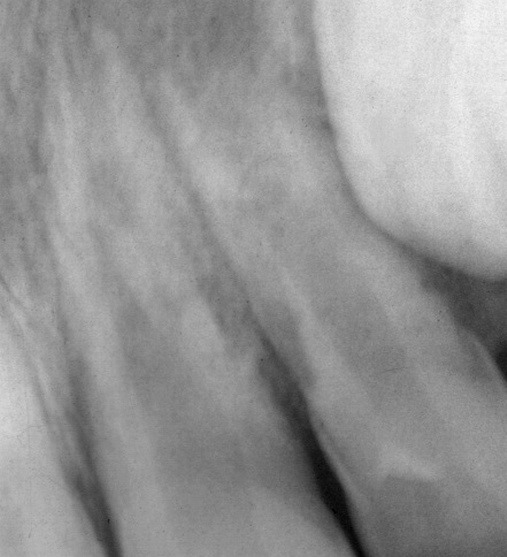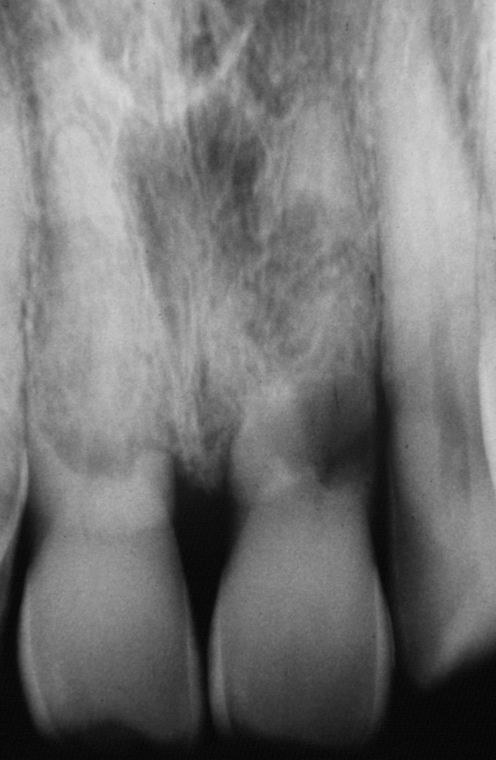External inflammatory resorption - Differential diagnosis




Replacement resorption and cervical resorption must be particularly considered in the differential diagnosis of external inflammatory root resorption. The dental history is of great importance in the diagnosis. External inflammatory root resorption starts within 1 to 3 weeks after dental trauma and is most frequent after intrusion injury. In replacement resorption the time lapse between trauma and resorption is often several years. Also, in cervical resorption it is usually difficult to trace an episode of trauma in the dental history.
External inflammatory root resorption typically proceeds rapidly and the tooth can be destroyed in a few weeks if no treatment is provided. The other two resorptions are much slower, although cervical resorption sometimes may show great progress in a few months.
Radiographically, external inflammatory root resorption results in destruction of wide areas of the root, including apically, whereas cervical resorption commences near the marginal bone. Unlike in replacement resorption, inflammatory bone destruction is typically seen in external inflammatory root resorption.
Combining the information gained from the dental history with clinical and radiographic findings usually allows establishing a diagnosis with confidence.